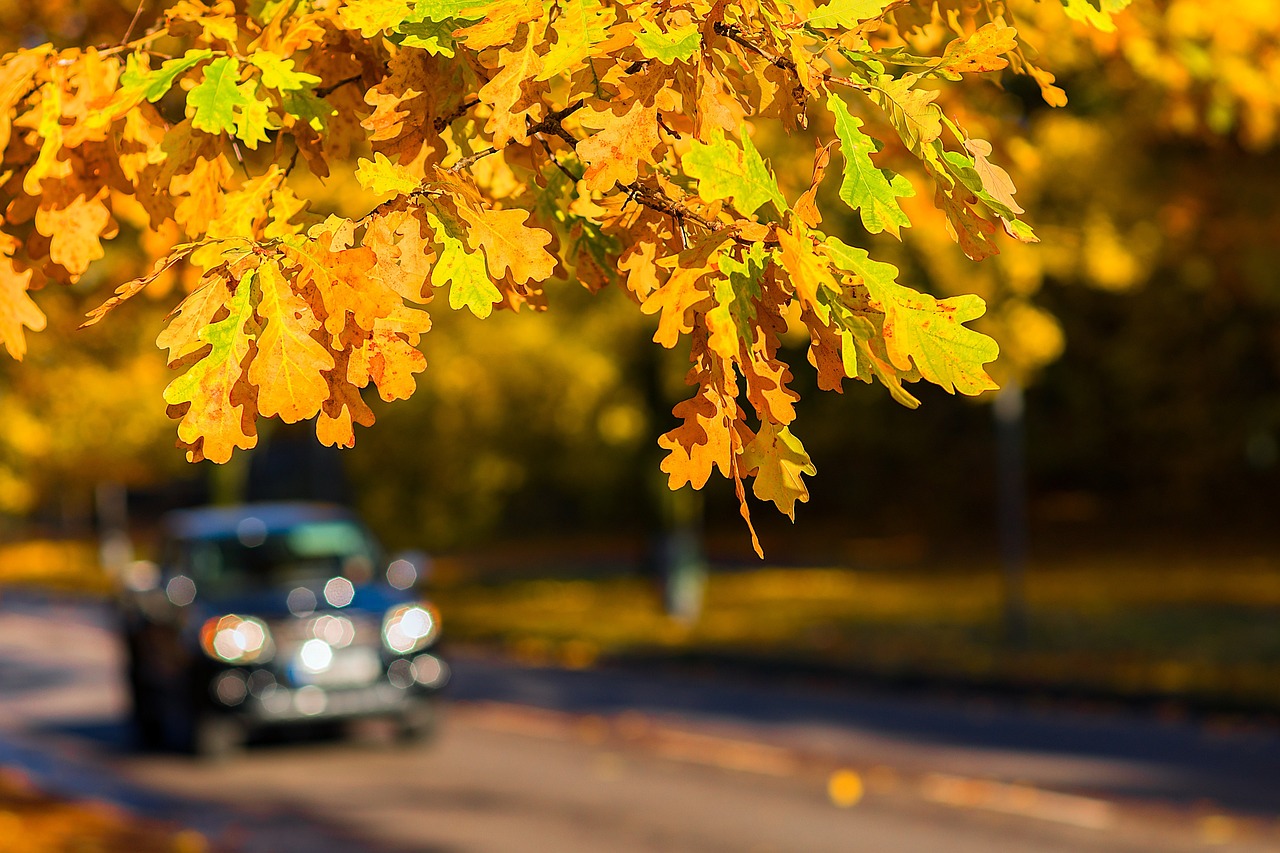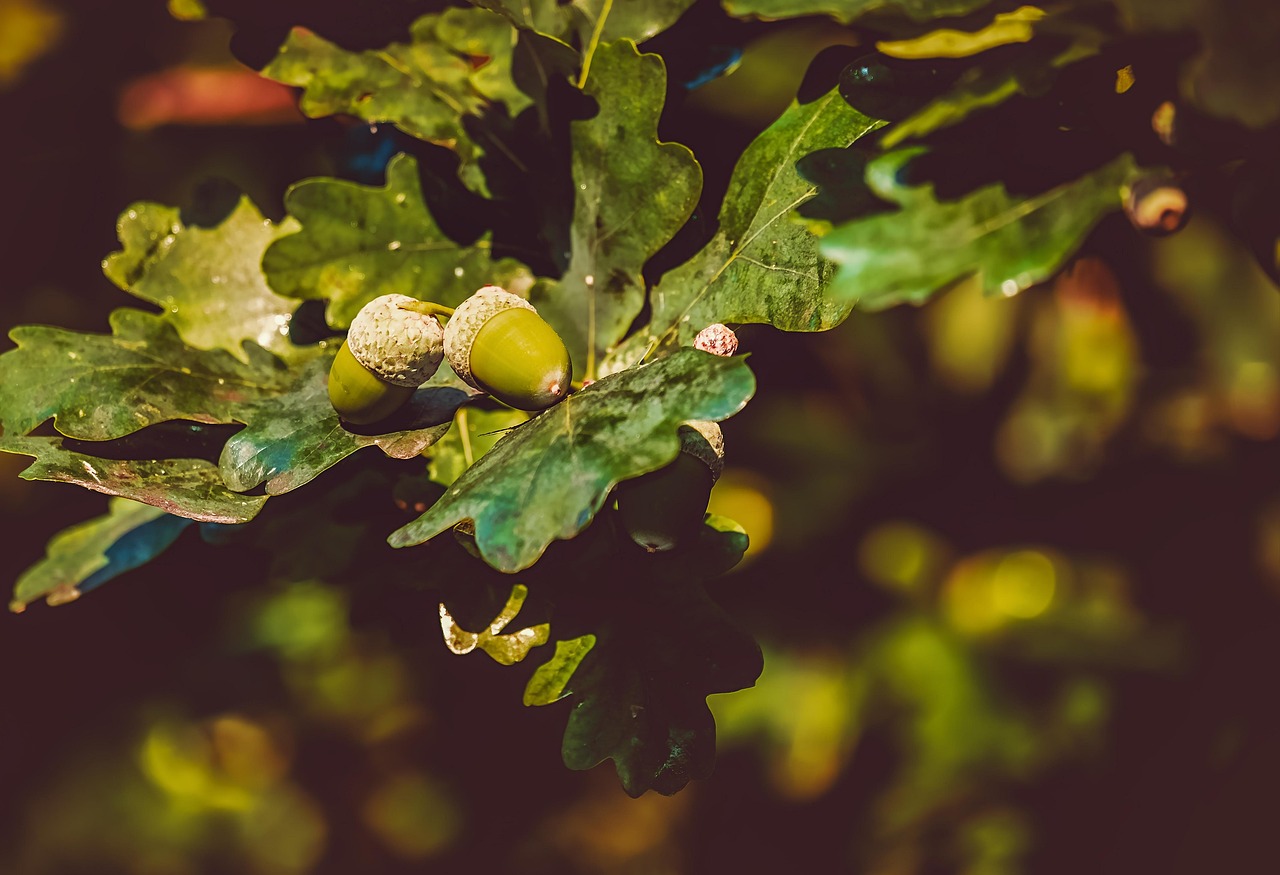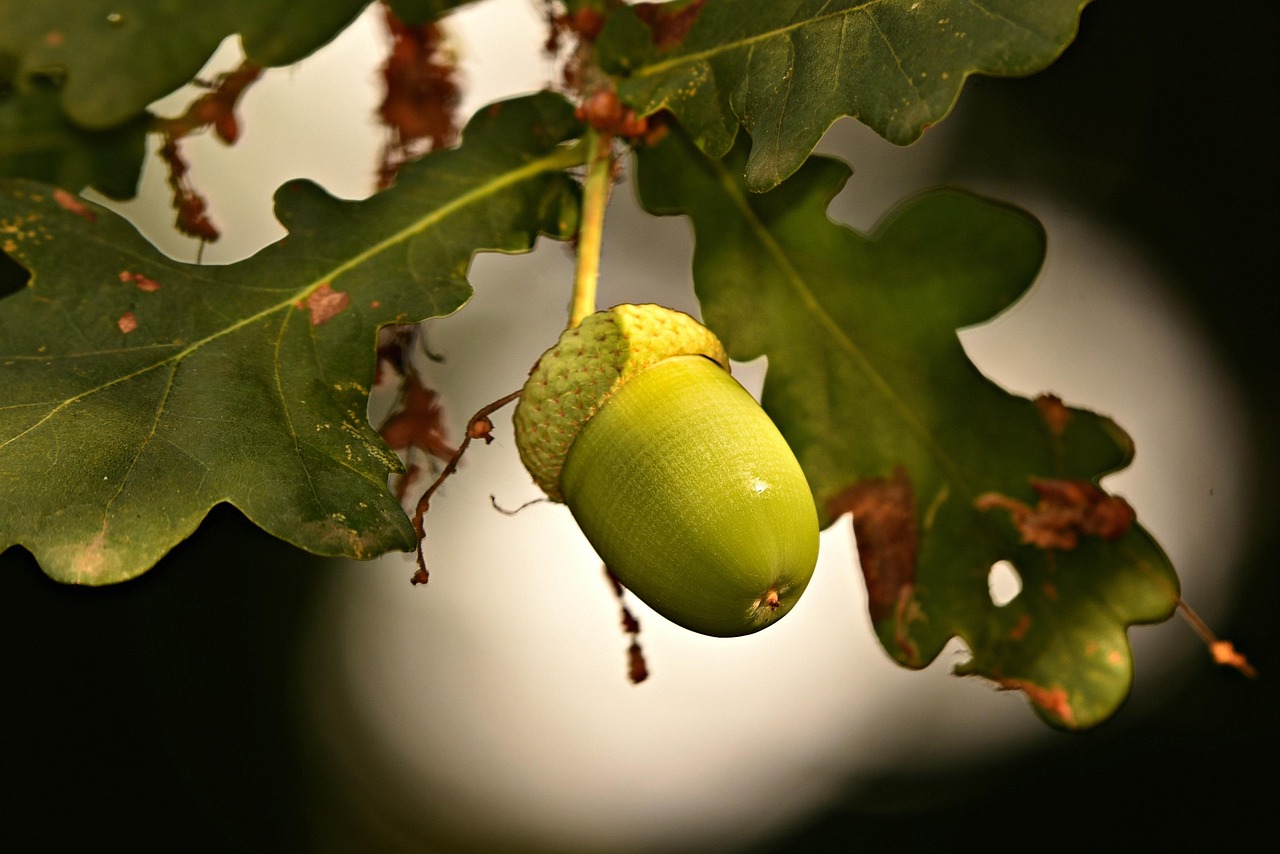Planting under oak trees can be a rewarding experience. While these magnificent trees provide shade and shelter, they also present unique challenges for gardeners. Understanding which plants thrive beneath them is essential for creating a vibrant garden space.
Oak trees are known for their strength and longevity. They can grow to be quite large, casting significant shade and competing with other plants for nutrients and water. This environment can make it difficult for many plants to survive. However, certain species have adapted to these conditions and can flourish in the shade of oak trees.

One of the key factors to consider when planting under oak trees is the soil composition. Oak trees typically thrive in well-drained, slightly acidic soils. This means that any plants you choose to grow should also prefer similar soil conditions. Additionally, oak trees have extensive root systems that can absorb a lot of moisture and nutrients, making it crucial to select plants that are either drought-tolerant or can compete effectively.
Understanding the Oak Tree Ecosystem
The ecosystem beneath an oak tree is unique. The shade it provides creates a microclimate that can significantly differ from the surrounding area. This microclimate influences temperature, humidity, and moisture levels, which in turn affects which plants will thrive.
Additionally, the fallen leaves from oak trees contribute to a layer of mulch that can help retain moisture in the soil while also providing nutrients as they decompose. This natural addition can benefit certain plants that prefer rich, organic material in their growing environment.
Key Considerations for Planting
When selecting plants to grow under oak trees, consider the following factors:
- Shade Tolerance: Choose plants that can thrive in low light conditions.
- Soil Preference: Opt for plants that prefer well-drained, acidic soils.
- Drought Resistance: Select species that can withstand competition for water from oak roots.
- Growth Habit: Consider plants that have a growth habit suitable for close quarters with tree roots.
Plants That Thrive Beneath Oak Trees
There are several types of plants that are known to do well under oak trees. These include ground covers, wildflowers, and ferns. Here are a few examples:
| Plant Type | Common Species | Characteristics |
|---|---|---|
| Ground Cover | Pachysandra terminalis | Evergreen; spreads quickly; tolerates heavy shade. |
| Wildflower | Trillium | Beautiful flowers; prefers moist, rich soil; thrives in shade. |
| Fern | Polystichum acrostichoides | Drought-resistant; grows well in acidic soil; adds texture. |
| Perennial | Hosta | Variety of leaf colors; ideal for shady spots; low maintenance. |
Selecting the right plants for your garden under oak trees can enhance the beauty of your landscape while respecting the natural environment. By understanding the specific needs of both the oak tree and potential companion plants, you can create a thriving ecosystem that benefits all its inhabitants.
Choosing the Right Ground Covers
Ground covers are an excellent choice for planting under oak trees. They can help suppress weeds, retain moisture, and enhance the aesthetic appeal of shaded areas. When selecting ground covers, consider species that are not only shade-tolerant but also compatible with the oak tree’s root system.
Popular Ground Cover Options
Here are some popular ground cover plants that thrive in the shade provided by oak trees:
- Vinca minor: Also known as periwinkle, it produces lovely blue flowers and has a sprawling habit. It is drought-resistant and can tolerate poor soil.
- Ajuga reptans: Known as bugleweed, it has attractive foliage and blooms with spikes of blue flowers in spring. It is hardy and spreads easily.
- Lamium maculatum: Commonly called dead nettle, this plant features silver leaves and small purple flowers. It thrives in shaded areas and adds visual interest.
- Thymus serpyllum: Creeping thyme is not only a ground cover but also a fragrant herb. It prefers well-drained soil and can handle foot traffic.
Incorporating Ferns into Your Garden

Ferns are another fantastic option for landscaping under oak trees. They add texture and lush greenery to shaded areas, thriving in the moist, acidic environment that oak trees create.
Types of Ferns Suitable for Shady Areas
Consider these fern varieties for your shaded garden:
- Dryopteris erythrosora: Also known as autumn fern, it has beautiful coppery new fronds that mature to green, adding seasonal color.
- Polystichum munitum: The western sword fern is a robust choice known for its arching fronds that can reach several feet in length.
- Athyrium niponicum: Japanese painted fern features striking silvery foliage with purple highlights, making it a stunning addition to any shade garden.
- Asplenium nidus: The bird’s nest fern has wide, wavy fronds that grow in a rosette shape, creating a unique focal point.
Flowering Plants for Under Oak Trees

While many flowering plants struggle in shady conditions, there are several species that can thrive beneath oak trees. These plants can provide color and beauty to your garden.
Best Flowering Options
The following flowering plants are suitable for shaded areas:
- Epimedium: Known as barrenwort, it produces delicate flowers in spring and has attractive foliage throughout the year.
- Columbine (Aquilegia): This plant offers unique flower shapes and colors and can tolerate partial shade.
- Trillium grandiflorum: The large-flowered trillium features elegant white flowers that turn pink as they age, making them a striking choice.
- Polygonatum: Also known as Solomon’s seal, this plant has arching stems with bell-like flowers that dangle gracefully.
Selecting these plants not only enhances the garden’s appearance but also supports local wildlife, including pollinators. By carefully considering the needs of both the oak tree and the chosen plants, you can create a harmonious landscape that thrives in the shade.

Strategies for Successful Planting Under Oak Trees
Planting under oak trees requires careful planning and consideration of the unique conditions. To ensure that your chosen plants thrive, implement effective strategies that cater to the specific challenges of this environment.
Soil Preparation Techniques
Proper soil preparation is essential for successful planting. Given that oak trees often dominate the area with their extensive root systems, it is important to enhance the soil quality before introducing new plants. Here are some techniques:
- Testing Soil pH: Conduct a soil test to determine the pH level. Oak trees prefer slightly acidic soils (pH 6.0 to 7.0). Adjust the pH as needed using amendments like sulfur or lime.
- Improving Drainage: If the soil tends to retain water, consider incorporating organic matter such as compost or well-rotted leaf mold to improve drainage and aeration.
- Mulching: Apply a layer of organic mulch around the planting area. Mulch helps retain moisture, suppresses weeds, and adds nutrients to the soil as it decomposes.
Watering Practices
Proper watering is crucial when planting under oak trees. The competition for moisture can be intense due to the oak’s extensive root system. Here are some best practices:
- Initial Watering: Water new plants thoroughly at the time of planting to ensure they establish well in the new environment.
- Consistent Moisture: Keep the soil consistently moist during the first few weeks after planting. This helps the roots acclimate to their new surroundings.
- Avoid Overwatering: Monitor for signs of overwatering, such as yellowing leaves or root rot. Ensure proper drainage to prevent waterlogged conditions.
Companion Planting Techniques
Companion planting can enhance the growth of plants under oak trees by creating a diverse ecosystem. Certain plants can benefit others by improving nutrient uptake, repelling pests, or providing shade. Here are some beneficial pairings:
Effective Plant Combinations
- Ferns and Ground Covers: Pairing ferns with ground covers like Vinca minor can create a lush, layered effect while maximizing space.
- Flowering Plants and Foliage Plants: Combining flowering plants such as Epimedium with foliage plants like Hosta can provide visual interest throughout the growing season.
- Nitrogen Fixers: Incorporate legumes or clover varieties that fix nitrogen in the soil, enriching it for neighboring plants.
Pest Management Strategies
Maintaining a healthy garden under oak trees also involves managing potential pests that may affect your plants. Here are some methods to prevent and control pest issues:
- Encourage Beneficial Insects: Plant flowers that attract pollinators and beneficial insects such as ladybugs and lacewings, which prey on harmful pests.
- Regular Monitoring: Inspect plants regularly for signs of pest infestations. Early detection allows for prompt action.
- Organic Pest Control: Use organic pest control methods, such as insecticidal soap or neem oil, to minimize chemical exposure while effectively managing pest populations.
By implementing these strategies, you can create a thriving environment for plants beneath oak trees. Understanding soil, watering practices, companion planting, and pest management will help ensure that your garden flourishes in this unique setting.
Final Considerations for Planting Under Oak Trees
Creating a flourishing garden under oak trees requires a thoughtful approach that takes into account the unique growing conditions these majestic trees create. In addition to the considerations already discussed, understanding the seasonal changes and how they impact your garden can further enhance your gardening success.
Seasonal Care and Maintenance
Proper maintenance throughout the seasons is crucial for sustaining healthy plants under oak trees. Here are some tips for each season:
- Spring: As the weather warms, ensure your plants are well-watered and apply a layer of mulch to retain moisture. This is also an excellent time to fertilize with organic options to promote growth.
- Summer: Monitor moisture levels closely during the hotter months, as competition for water can increase. Consider deep watering strategies to encourage deep root growth.
- Fall: After the oak trees shed their leaves, use the fallen leaves as mulch around your plants. This not only provides nutrients but also helps suppress weeds.
- Winter: Protect young plants from harsh winter conditions by covering them with burlap or additional mulch. This can help insulate the roots from freezing temperatures.
Creating a Wildlife-Friendly Habitat
Planting under oak trees also presents an opportunity to create a habitat that supports local wildlife. Incorporating native plants, which provide food and shelter, can enhance biodiversity in your garden.
- Nectar Plants: Include plants that produce nectar to attract bees and butterflies, essential for pollination.
- Seed and Berry Producers: Choose plants that produce seeds or berries, providing food sources for birds and small mammals.
- Habitats for Beneficial Insects: Create sheltered areas using logs or stones to provide habitats for beneficial insects that can help with pest control.
Conclusion
Planting under oak trees can be both a challenge and a delight. By selecting the right plants, understanding soil conditions, and employing effective gardening practices, you can cultivate a vibrant and sustainable garden in the shade of these mighty trees. The key is to choose shade-tolerant species that are well-suited to the specific conditions beneath oak trees, such as competition for moisture, nutrient availability, and light levels.
As you embark on your gardening journey under oak trees, remember that patience and observation are crucial. Each garden will have its own unique characteristics, so take the time to learn what works best in your specific environment. By fostering biodiversity and creating a harmonious ecosystem, you not only enhance the beauty of your landscape but also contribute positively to the local environment. With care and dedication, your garden can thrive under the majestic presence of oak trees for years to come.
